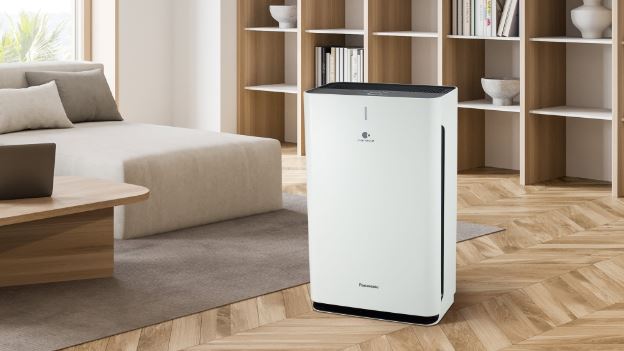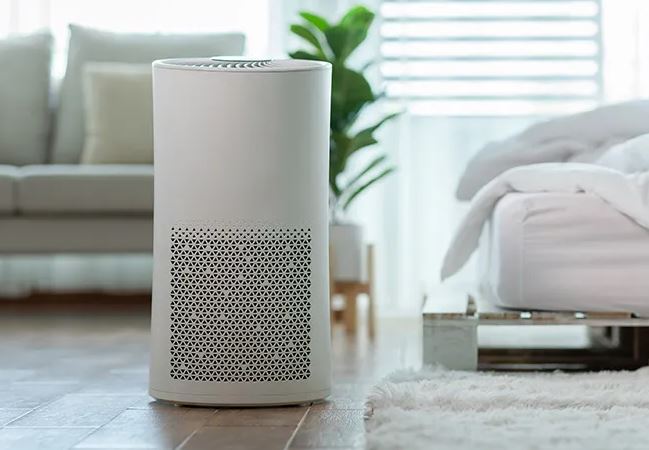Best Air Purifiers for Allergies: Top Picks for Relief
Best Air Purifiers for Allergies: Top Picks for Relief
Blog Article
In today's health-focused society, the air quality indoors and out has become a prominent focus for homeowners and health-conscious individuals. With increasing environmental pollution and a deeper insight of the influence of indoor air quality on overall health on our health, it's no surprise that the air purifier market is booming.
Air purifiers are devices that clean the air of pollutants in a space, enhancing the air we breathe indoors. They are especially advantageous for those with allergies, asthma, or respiratory concerns as they can significantly lower the amount of allergens, pollutants, and irritants in the air. Healthy individuals, too can benefit from air purifiers, as they offer peace of mind and an extra layer of protection against airborne illnesses.
This guide will dive deep into the intriguing world of air purification, discussing the perks they offer, the variety of options on the market, key considerations when choosing a purifier, and how to get the most out of your device. By the end, you should have a comprehensive understanding of air purifiers and be able to choose wisely about whether investing in one is the best option for your household.

Decoding Air Pollutants and Their Effects on Well-being
To understand why air purifiers are essential, it's vital to understand the variety of contaminants they address and the potential consequences of exposure to these contaminants.
Indoor air pollutants can be broadly categorized into three main types:
- Airborne Particles: This includes solid particles and liquid droplets suspended in the air. Examples include smoke, dust, pollen, pet dander, and mold spores. Particulate matter can cause respiratory issues and trigger allergic reactions.
- Volatile Organic Compounds (VOCs): VOCs are gases emitted from various solids or liquids. Sources of VOCs include paints, cleaning products, aerosol sprays, and pesticides. Exposure to VOCs can lead to eye, nose, and throat irritation, headaches, and nausea.
- Understanding Biological Contaminants: These include microbes such as bacteria, viruses, mold spores, and mildew. They can cause a variety of health problems, from minor allergies to serious infections.
The consequences of exposure on human health can differ considerably. For individuals with respiratory conditions or compromised immune systems, exposure to indoor air pollutants can lead to significant health complications. Even for healthy people, chronic exposure to certain pollutants can increase the risk of respiratory conditions and other health concerns over time.

Unraveling Air Purification Technology
Air purifiers use a range of physical and chemical mechanisms to capture and remove pollutants from the air. Understanding the basic mechanisms employed by purifiers will help you appreciate their effectiveness and the array of models on the market.
Here are the core processes and cutting-edge technologies used in air purifiers:
- Filtration Excellence: This is the most common method used in air purifiers. It involves using filters to trap particles as air is passed through the filtration system. The filter composition can differ, each designed to trap particular particle types. For example:
- Pre-filters: These are usually the first line of attack, trapping bigger contaminants like hair and dust.
- HEPA Filters: The Gold Standard: HEPA filters are exceptionally efficient at trapping tiny particles, including bacteria, viruses, pollen, and dust mites. To be labeled a true HEPA filter, it must capture at least 99.97% of particles as small as 0.3 microns.
- carbon filtration: These filters are designed to adsorb odors, VOCs, and gaseous pollutants.
- Ionizers: Charging Ahead: Ionizers use electrical charges to create ions with a negative charge, which attach themselves to particles in the air. The particles become charged, causing them to stick to surfaces or the purifier.
- Ozone Generators: Some air purifiers use ozone as a potent disinfectant to destroy contaminants. While effective, ozone can also be harmful to human health so these types of purifiers should be used with care and only when no one is present.
- UV Light: Shining a Light on Purification: UV light can be used to destroy biological contaminants like bacteria, viruses, and mold spores. UV light is commonly paired with filtration to capture particles first, followed by UV light to neutralize any remaining biological threats.
Selecting the Perfect Purifier
With a variety of choices available, selecting the ideal air purification system can be a difficult decision. It's important to consider several factors to ensure you make the right choice for your specific needs and space.
Here are some key considerations:
- Considering Room Size: Air purifiers are typically designed for specific areas, so it's important to choose a model that can adequately cater to the room size. Most purifiers will list a suggested room size or CADR rating, which indicates the rate at which it can deliver clean air.
- Understanding Contaminants: Identify the types of pollutants you want to target. If you suffer from allergies, look for a purifier with a HEPA filtration system. For eliminating odors, consider a model with a carbon-based filter. If you're concerned about viral and bacterial threats, a purifier with UV light technology might be best.
- Noise Level: Air purifiers can produce a range of noise outputs, so if you plan to use it in a serene environment, look for models with a quiet mode for undisturbed rest.
- Long-term Considerations: Consider the long-term expenses and upkeep of the purifier. HEPA filters, for example, typically need to be replaced every 6-12 months, depending on use and environmental factors. Factor in the cost of replacement filters when making your choice.
- Enhancing Your Experience: Many purifiers offer innovative smart capabilities like automatic modes, air quality monitoring, and wireless control, allowing remote control and monitoring. These features can make your purifier more user-friendly and efficient.
Optimizing Performance of Your Air Purifier
Once you've chosen and set up your air purifier, there are several things you can do to ensure it operates at maximum efficiency and delivers the greatest advantages:
- Strategic Positioning: Position your purifier in an unobstructed area, avoiding walls and furniture, to ensure optimal airflow. Avoid placing it near open windows or doorways as drafts can disrupt the purifier's effectiveness.
- Consistent Use: For the best results, it's recommended to run your purifier continuously. Many models have energy-saving features or smart modes that adjust the fan speed based on air quality, so you can maintain fresh air without excessive energy costs.
- Maintain the Filters: Regularly follow the manufacturer's filter replacement guidelines. Over time, filters become clogged with particles, reducing the purifier's efficiency. Set a reminder for filter changes so you don't forget.
- Minimize Indoor Pollutants: Alongside using an air purifier, take steps to limit indoor contaminants. This could include frequent dusting and vacuuming, opting for natural cleaning solutions, and reducing chemical or aerosol usage. Report this page